#Marie Zéphyrine of France
Photo

A portrait of Marie Zéphyrine of France, eldest living child born to Louis, Dauphin of France, and his second wife, Maria Josepha of Saxony.
#louis ferdinand de bourbon#louis ferdinand de france#louis de bourbon#maria josepha of saxony#marie zephyrine de france#Marie Zéphyrine of France#house of bourbon#18th century#18th century art#long live the queue
92 notes
·
View notes
Photo

Marie Zéphyrine of France (26 August 1750 – 2 September 1755) was a Daughter of France, the daughter of Louis, Dauphin of France, and Maria Josepha of Saxony.
Marie Zéphyrine, known as Madame Royale or la Petite Madame, was born at the Palace of Versailles and was named after St Zephyrinus, on whose feast day she was born. Her birth was greeted with caution; in the previous two years, Maria Josepha had suffered stillbirths and her health was of a fragile nature. Louis XV, on the other hand, had hoped for a grandson. Marie Isabelle de Rohan served as Marie Zéphyrine's governess. Marie Zéphyrine died at Versailles due to an attack of convulsions, in the early hours of the morning of 2 September, having been baptised just days before by the Abbot of Chabannes. She was not officially mourned; a Daughter of France could only be mourned if she was over the age of 7. She was buried at the Royal Basilica of Saint Denis outside the capital of Paris.
2 notes
·
View notes
Photo
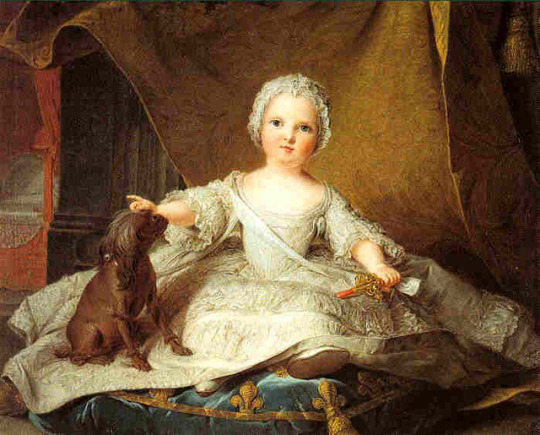
Marie Zéphyrine of France (26 August 1750 – 2 September 1755) was a French princess, the daughter of Louis, Dauphin of France, and Maria Josepha of Saxony.
Marie Zéphyrine, known as Madame Royale or la Petite Madame, was born at the Palace of Versailles and was named after St Zephyrinus, on whose feast day she was born. Her birth was greeted with caution; in the previous two years, Maria Josepha had suffered stillbirths and her health was of a fragile nature. Louis XV, on the other hand, had hoped for a grandson. Marie Isabelle de Rohan served as Marie Zéphyrine's governess. Marie Zéphryine died at Versailles due an attack of convulsions, in the early hours of the morning of 2 September, having been baptised just days before by the abbot of Chabannes. She was not officially mourned; a French princess could only be mourned if she was over the age of 7. She was buried at the Royal Basilica of Saint Denis outside the capital of Paris.
6 notes
·
View notes
Text
NAMES MASTERLIST**
under the cut you will find 45+ names inspired by 18th century FRENCH ROYALTY & ARISTOCRACY including examples of their usage in history. please like/reblog if you found this useful!
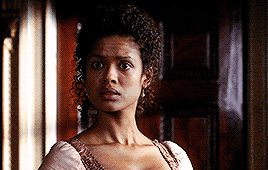
**compound names were very common, and would often be referred to by just one or two of the names (ei, marie louise élisabeth was called madame élisabeth, anne henriette was madame henriette). some names seen as “feminine” in english speaking countries, such as marie, are traditionally used in compound names for all genders without changes in spelling
names taken from women in history:
louise: marie louise élisabeth (madame royal, daughter of louis xv), maire louise (fille de france, daughter of louis xv)
élisabeth: “babette” marie louise élisabeth
marie: marie antoinette (queen of france), marie adélaïde (fille de france, daughter of louis xv), marie-louise (fille de france, daughter of louis xv)
thérèse : marie thérèse félicité (fille de france, daughter of louis xv), marie thérèse (daughter of louis xvi)
anne: anne henriette (fille de france, daughter of louis xv)
henriette anne henriette (fille de france, daughter of louis xv), jeanne louise henriette campan (ladies maid, educator of many of louis xv’s daughters)
adélaïde: marie adélaïde (fille de france, daughter of louis xv)
sophie: sophie philippine elisabeth justine (fille de france, daughter of louis xv), sophie hélène béatrix (fille de france, daughter of louis xvi)
jeanne: jeanne poisson (madame de pompadour, maîtresse-en-titre to louis xv)
félicité: pauline félicité de mailly-nesle (mistres of louis xv), marie thérèse félicité (fille de france, daughter of louis xv)
victoire: victoire louise marie thérèse (fille de france, daughter of louis xv)
zéphyrine: marie zéphyrine (petite-fille de france, daughter of louis, dauphin of france)
isabelle: marie isabelle de rohan
angélique: marie isabelle gabrielle angélique (duchess of tallard),
clotilde: marie adélaïde clotilde xavière (petite-fille de france, daughter of louis dauphin of france)
hélène: élisabeth philippe marie hélène (petite-fille of france, daughter of louis dauphin of france), sophie hélène béatrix (fille de france, daughter of louis xvi)
amélie: amélie florimond (likely an illegitimate daughter of louis xv)
agathe: agathe louise de saint-antoine de saint-andré (illegitimate daughter of louis xv)
charlotte: marie thérèse charlotte (madame royale, daughter of louis xvi)
yolande: yolande de polastron (duchess of polignac)
gabrielle: yolande martine gabrielle de polastron (duchess of polignac)
martine: yolande martine gabrielle de polastron (duchess of polignac)
aglaé: aglaé louise françoise gabrielle de Polignac
beatix: sophie hélène béatrix (fille de france, daughter of louis xvi)
diane: diane louise augustine de polignac (lady in waiting)
augustine: diane louise augustine de polignac (lady in waiting)
julie: louise julie de mailly-nesle (mistress of louis xv, comtesse de mailly)
hortense: hortense félicité de mailly-nesle (marquise de flavacourt)
françoise: françoise de mazarin (lady in waiting)
names taken from men in history:
louis: literally all the kings of the 18th century. louis xiv, louis xv, louis xvi
auguste: louis auguste (louis xvi of france), jules auguste armand marie (count of polignac)
françois: louis joseph xavier françois (dauphin of france), étienne françois (marquis de stainville, duc de choiseul)
ferdinand: louis ferdinand (dauphin of france)
phillipe: phillippe louis (duc of anjou, fils de france, son of louis xv)
charles: charles emmanuel marie magdelon (marquis du luc, son of louis xv), charles phillippe (count of artois, charles x)
joseph: louis joseph xavier (duke of burgundy, son of louis dauphin of france)
xavier: louis joseph xavier (duke of burgundy, son of louis dauphin of france), xavier marie joseph (duke of aquitaine, son of louis dauphin of france)
jules: armand jules françois (duke of polignac), jules auguste armand marie (count of polignac)
armand: armand jules françois (duke of polignac), jules auguste armand marie (count of polignac)
henri: camille henri melchior (count of polignac)
camille: camille henri melchior (count of polignac)
marie: jules auguste armand marie (count of polignac)
étienne: étienne françois (marquis de stainville, duc de choiseul)
césar: césar gabriel de choiseul (duc de praslin)
gabriel: césar gabriel de choiseul (duc de praslin)
jean: jean-frédéric phélypeaux (count of maurepas)
frédéric: jean-frédéric phélypeaux (count of maurepas)
76 notes
·
View notes
Photo
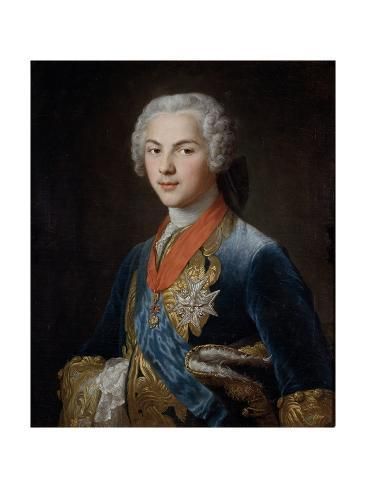
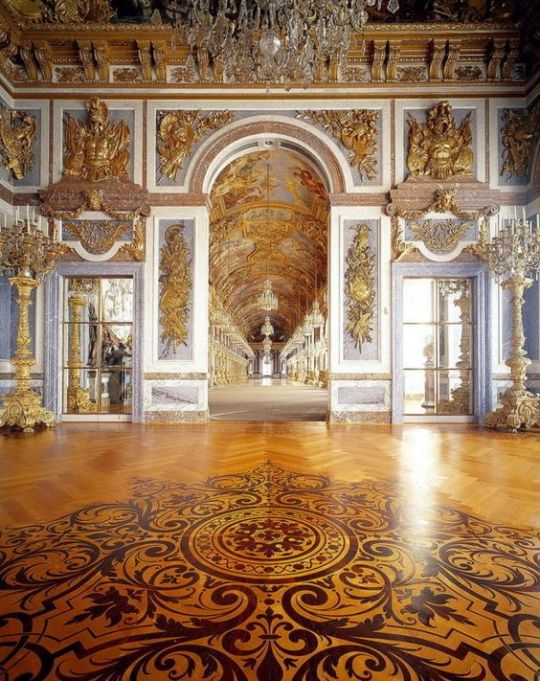

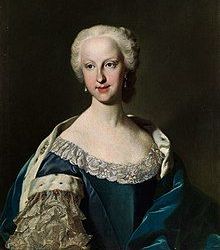
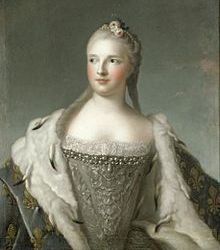

“Louis Auguste was the fourth child and second surviving son of Louis XV's eldest son, the Dauphin Louis of France and his second wife Maria Josepha of Saxony, who was affectionately known as 'Pepa'. The royal couple had been considered unusual at Versailles for their domestic harmony and frank and open adoration of each other in a court where it was considered bad form to be openly affectionate towards one's spouse.
The Dauphin was a complicated character: he wrote to a friend that his soul was 'always gay' and indeed there was a liveliness and cheerfulness about him that made his company much sought after. However, he had also inherited the morbid nature of his parents Louis XV and his devout Polish wife Marie Leszczynska and was obsessed with death and dying, much as his cousin Isabella of Parma had been during her time in Vienna. His mother kept the skull of the delightful courtesan Ninon de Lenclos on her desk, garlanded with flowers (....). She called it 'Ma chère mignonne'.
It is recorded that in the early days of their marriage, the young Saxony princess Maria Josepha had been horrified to witness her new husband and his sisters spending evenings dressed in black and walking slowly around a dim candlelit room murmuring 'I am dead, I am dead, I am dead' in a continuation of a favourite game from childhood. It all seemed a bit weird and unacceptably morbid to a young princess who adored dancing, laughing, being outdoors, having fun and celebrating life.
It didn't help matters that the young Dauphin had been married once before, to the pretty Infanta Maria Teresa Rafaela of Spain, who was four years his senior. The court had giggled behind their spangled and painted fans at the young's bride unfashionable red hair, but the Dauphin had fallen immediately ans violently in love with her and was thrilled when she became pregnant. 'I can hardly believe that I am so soon to become a father!', he wrote to a friend, his delight echoing that of every young father throughout the centuries.
Maria Teresa gave birth to a daughter Marie-Thérèse in July 1746 and died four days later. Her young husband, just sixteen years old at this time, was genuinely devastated with courtiers likening his grief to that of ‘an inconsolable child’, which in many ways he was. The little princess, his only link with his deceased love, was to live for just two years and would die in April 1748 after being given an emertic in an attemp to alleviate the pain of teething.
No one knew quite what to expect when the Dauphin was married again, this time to Maria Josepha, and she must have been quite perturbed when on their wedding night he collapsed in tears into her arms and sobbed about his dead wife, which must have been somewhat awkward to say the last. The marriage seemed doomed to failure until the Dauphin caught smallpox and his little wife insisted on nursing him back to health herself. It is said she took such great care of him that a short sighted doctor (...) said to the Dauphin, ‘You have an excellent little nurse there. Never get rid of her’. The Dauphin made a full recovery and filled with gratitude, he fell in love at last with his wife.
The young couple enjoyed a blissful life together, almost a second honeymoon in fact, and were to be seen at their devotions together in the Versailles chapel every morning, before taking the air together on the terrace by the Orangerie.
They shared exactly the same tastes for music, reading and gardening and loved to spend their time together. The Dauphin was a talented musician and played the violin, organ and spinet as well as singing in a very fine baritone. (...) He was also a talented actor, capable of reducing an audience to fits of uncotrollable laughter with his comedic roles.
(...) Both were keen philanthropists, who loved to assist the needy and were generous givers to charity. They gave instructions to their children’s tutors that the princes and princesses should be taken to the houses of the needy so that they could see for themselves how the poor lived.
‘They must learn to weep. A prince who has never shed any tears cannot be good’, the Dauphin explained.
He was also very fond of taking his sons to view the baptismal register of the parish of Versailles, where their names were written alongside those of more humble infants.
‘Look my children, look at your names written after the name of a pauper. The only thing that can establish any difference between you is virtue’, he would say.
(...) When Louis Auguste was born in the Dauphine’s bedchamber on the ground floor of Versailles in the boiling hot summer of 1754, the royal nursery at the palace was already home to Marie Zéphyrine, who was born in August 1750 and Louis Joseph, who was born in September 1751. Another son, Xavier, had recently died in February 1754 at the age of six months.
(...) Their new son was born at quarter to seven and immediately passed into the care of Madame de Marsan, who was already governess to his elder brother the Duc de Bourgogne (...).”
From: “Marie Antoinette: An Intimate History”, by Melanie Clegg.
#18th century#King Louis XV#Queen Marie#marie leszczynska#House of Bourbon#Capetienne dynasty#Capét#Marie Antoinette#Louis XVI#King Louis XVI#Dauphin Louis#Maria Josepha of Saxony#Maria Teresa Rafaela of Spain#Dauphine#modern age France#portraits#Versailles
66 notes
·
View notes
Text
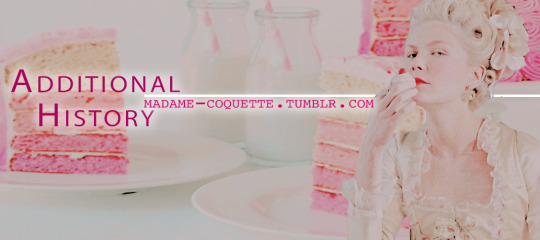
Under the cut: you will find a lengthy, yet concise summary of the historical life and rule of Louis XVI.
*** While this is not a mandatory read - it is interesting and will be referenced in most threads outside of the Modern AU, ( which must be requested to write in. ) Some knowledge may benefit you to know if you don’t have a good base in the history of the french revolution. I may add to this as I gain more sources and insight into the King’s personal life. ***
Name: Louis Auguste de France
Other Names: Louis XVI || Citizen Louis Capet ( Before Execution )
Titles: Duc de Berry ( Given at birth ) || Dauphin ( After his father died ) || King of France ( After his grandfather died )
Birthday: 23rd of August 1754 || Reign as King lasted from May 10th 1774 - September 21st 1792
Died: January 21st 1793 || Execution By Guillotine
Religion: Roman Catholic
Family Ties: House of Bourbon
Siblings: Louis XVIII Comte de Provence, Charles X Comte d’Artois, Élisabeth de France, Louis Duc de Burgundy ( Died at 9 ), Clotilde de France, Xavier Duc de Aquitaine ( Died at 1 ) , Marie Zéphyrine de France ( Died at 5 ), Marie - Thérèse de France ( Died at 2 ).
Parents: Marie-Josèphe of Saxony & Louis the Dauphine of France
Spouse: Marie Antonia Josepha Johanna || ( French Version ) Marie Antoinette ( Second Cousin, Once Removed. )
Biography:
Often passed over in favor of his older brother Louis ( Duc de Burgundy ) because he was more outgoing, handsome & intelligent. Tragically, he died at 9 & favor was shifted to the new future Dauphin. Louis Auguste was by all accounts a healthy but painfully shy & reserved child. He was equally as bright as his brother excelling in: Latin, History, Geography, Astronomy. He was also fluent in English & Italian. ( Louis liked to wrestle with his brothers & hunt with his grandfather. ) His special interest was in locksmithing & this was encouraged by those around him as a worthwhile pursuit even in his childhood. The subjects he was taught by the Duc de la Vauguyon additionally included: Religion, Morality & Humanities.
Louis married Marie on May 16th 1770 when he was just 15 and she was 14. By the time the two were married to form the French & Austrian alliance: the defeat of France, in the 7 years war had already made the French public view the new Dauphine as an unwelcome stranger to the country.
The couple only met 2 days before their marriage, and for this reason the marriage was cordial but very distant in the beginning. Louis was shy & also afraid of being manipulated by Marie for stately purposes --- this made him act coldly towards her in public. They did eventually foster a fondness for each other & their marriage was consummated in 1777.
( Louis XVI & Marie Antoinette’s reputations were damaged because they did not produce heirs in a traditionally ‘ timely manner ‘. )
After gentle prodding from Marie’s brother, Joseph II --- Louis began to take his conjugal duties seriously and Marie fell pregnant, eventually giving birth to 4 live-born children. ( Marie suffered 2 miscarriages and Louis - by all accounts - consoled her each time. ) Louis XVI also ‘ adopted ‘ six children additionally, though they were never granted royal status.
Louis took the throne in 1774 at age 19 after his grandfather died. By then, there was already resentment among the public for the royal family, lots of government debt incurred before he was installed as monarch, and so much responsibility that Louis himself did not feel ready & prepared to take on.
Louis XVI’s indecisiveness & lack of firmness - though grounded in the idea he wanted to be liked & loved - ultimately, led to part of his downfall. ( It should be noted Louis Auguste DID genuinely attempt to be a good and just king, the circumstances that line up before his assent to the throne were too vastly stacked against him. )
Louis reinstated the ‘ parlements ‘ & put a more experienced advisor in place to ensure that things were fair and on the up and up. Louis also signed the Edict of Versailles || Edict of Tolerance that allowed Non-Catholics to have the legal right to practice their faith(s), as well as restore legal/civic rights and status to them. This overturned the Edict of Fontainebleau which had reigned as law for a little over 100 years. While the Edict of Versailles didn’t claim freedom of religion - it decriminalized the practice of other religions and helped ease tensions based on religious differences in the country.
Radical financial reforms were a steadily growing need in the country because of the mounting debt ... the nobles refused to instate the necessary laws ultimately culminating in further dissatisfaction among the public and stoking the flames of the oncoming French Revolution. The publication of ‘ Le Compte - rendu au Roi ‘ -> ‘ The Records of Accounts for the King ‘ further ruined the monarchy’s reputation by publishing propaganda that was full of fictitious & inaccurate budgets meant to make France look more financially stable than it was. When the true extent of France’s debt was revealed: the common man & many nobles alike were shocked and disgusted, the nobility outright rejecting the reforms necessary to begin to rectify the scenario.
Finally, the country’s finances reached an appalling low --- and Louis was forced to use his absolute powers to force reforms, though they could only be maintained for more than 2 - 4 months maximum before he would be forced to revoke them. He closed down the french parliamentary system. The royal treasury was also unable to sustain the reforms imposed because it was in a crippled state as it was.
After much abuse from the the First & Second Estates ( after Louis reinstated the Estates-General ) the third estate decided unanimously declared themselves the National Assembly. Soon after Louis lost control of this newly formed legislative body - the revolution was underway and officially began with the Storming of the Bastille on July 14th 1789.
Louis Xvi’s Palace de Versailles was stormed by an angry mob on October 5th 1789. This was done in an attempt to kill Marie --- the now much hated symbol of frivolity to the French public. After the Marquis de Lafayette diffused the situation - the royal family was forced to move themselves to the Tuileries palace in Paris.
While plenty of key figures besides the king and queen attempted to gather strength to restore the former absolute power of the monarchy --- it would ultimately fail and many of these secret supporters either retracted loyalty to the crown under threat of death, or met grisly ends by the hands of the public & new governing body. Louis, finally realizing the danger he and his family were in and wanting to regain control of France - helped Axel von Fersen ( a rumored lover to the Queen ) plan the royal family’s escape to gather forces and gain protection by Austria. After a series of setbacks, missteps, poor judgements, indecision, and assorted other issues behind the scenes - the family was caught and returned to Paris ( Tuileries Palace ) on June 25th 1791 and placed under highly monitored ‘ house arrest ‘. It didn’t help that before they left, Louis left a manifesto denouncing democracy and asserting his authority as king by birthright. Many of his subjects felt torn and confused, though remained loyal ... until this incident in which the revolution was known to be imminent.
All in all, the call to arms fell on inactive deaf ears amid among other foreign monarchs, making the response woefully lackluster and this ultimately sealed the fate of the French aristocracy. On August 10th 1791, the people once again stormed the palace Louis and his family resided in forcing them all to take refuge with the Legislative Assembly.
Louis was officially arrested on August 13th 1792.
September 21st 1792 - the former Third Estate’s new government body the ‘ National Assembly ‘ announced France a republic and abolished the monarchy altogether. All of Louis - Auguste’s titles were taken and he was referred to as Citoyen Louis Capet. While many members wanted the gratification of executing the former king --- the fact some had backgrounds in legal work felt due process a necessity. An agreement was reached that there would be a trial for Louis before the National Convention.
Several charges were brought against Louis while he was being tried, though there were only three questions that mattered to the assembly:
1| Is Louis guilty ?
2| Whatever the decision, should there be an appeal to the people ?
3 | If found guilty: what punishment should Louis suffer?
On the 26th of December 1792, Louis responded tot he charges: Not Guilty. At this time, behind closed doors - he had already accepted his fate & knew that he would be found guilty. He was reported as wanting to hold his ground so that he might still be viewed favorably and as a good king to France.
Voting took place & after an uncomfortably close call - Louis was sentenced to death by the majority of one vote: his own cousin, the former Duc d’Orleans, voted to have his cousin executed immediately. After an unsuccessful attempt at swaying the decision - the King’s council was resigned ( read as: ‘ forced ‘ ) to allow the execution to proceed.
On Monday, January 21, 1793 --- The ( Former ) Sun King was executed by Guillotine at age 38. This happened on the Place de la Révolution. By most reputable accounts, Louis faced his death with resignation and dignity. He gave a small speech before hand and was stopped before he could complete it with a drum roll that signaled the Guillotine was ready.
After the execution, his body was taken to Madeleine Cemetery where he was given a small secret funeral service and then buried in an unmarked grave, head between his feet and covered in quicklime.
The cemetery closed in 1794. 21 years later, Louis XVIII had his brother and sister in law exhumed and reinterred in the Basilica of St. Denis. From 1816 - 1826 a monument honoring the King and Queen was erected in the same area the former cemetery and church occupied. It was named the ‘ Chapelle Expiatoire ‘.
#• Le Tendre Soleil Se Lèvera Á Nouveau. • ( Louis Auguste || Louis XVI. )#• You Can't Play My Cabinet Like A Harpsichord ... • ( NPCs. )#• Why Do Americans Think They Know It All ? • ( OOC Historical Rambling. )
4 notes
·
View notes
Photo

A beloved little girl who died young is depicted in the exquisite Dresden porcelain of her Mother's land of Saxony. Marie-Zéphyrine de France was the older sister of Louis XVI. It is sad to think that the dreadful Choiseul called Louis and his brothers and sisters the "Dresden knick-knacks." https://teaattrianon.blogspot.com/2015/07/portrait-bust-of-princess-marie.html
11 notes
·
View notes
Text

Je viens de terminer ma lecture du livre « Liberty’s Fire » de Lydia Syson que j’ai aimé beaucoup.
Même si l’autrice se prend quelque liberté d’interprétation on voit qu’il y a beaucoup de recherche historique dedans. Dans mon avis elle est vraiment réussie à faire vivre ces semaines de la Commune et ça avec un large spectrum de perspectives et des personnages différents dans le charactère, dans leur opinion, mais aussi dans la provenance sociale. Quand on lit cela, ce n’est jamais ennuyeux, en fait on ne peut plus finir. On vit ces mois de mars à mai avec ces personnages. On peut même dire qu’on commence à partager leur vie, leur peur, leur espoir, leur amour (et les peines d’amour). On va avec eux dans le théâtre, dans les comités, au cimetière, sur les barricades, on se cache dans le train pour Genève…
Il y a Zéphyrine que la pauvreté porte presque à la prostitution, mais qui trouve de l’espoir et une nouvelle tâche de vie dans la Commune ensemble à son amie Rose. Il y a Anatole, violoniste et membre de la garde nationale dans le même temps, qui sauve Zéphyrine comme il avait déjà sauvé une chatte pendant le siège. Il y a l’américain Jules qui est envoyé à Paris par son père pour connaître le monde capitaliste de France, mais qui préfère s’occuper de la photographie et documente la Commune en photo. Puis il y a Marie, la chanteuse, qui est la plus sceptique vers la Commune, et profondément inquiète parce elle n’a plus de nouvelles de son frère, qui était fait prisonnier pendant la guerre franco-allemande. J’ai trouvé particulièrement intéressant ce personnage de Emile, le frère, même s’il reste relativement secondaire. C’est surtout parce que vers la fin Marie le retrouve, vivant mais traumatisé parce que fait complice dans le massacre dont il a commencé de comprendre la logique : « Je savais que ce n’était pas possible qu’ils sont tous coupables. Chacun le pouvait voir. Comment c’était possible qu’ils étaient coupables tous ? » Mais il n’avait pas autre choix que d’obéir… Je crois que ça illustre bien comment Syson est entrée dans la profondeur.
Ce livre montre la situation dans la complexité, loin d’une simple division en noir et blanc, et aussi laisse espace à sentiments la méfiance et à la trahison et leurs conséquences. Il ne cache pas le tragique des évènements, mais il finit par une fin prometteuse mais ouverte…
0 notes
Photo

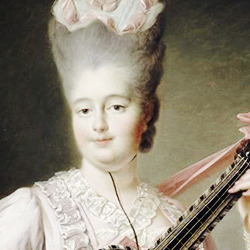
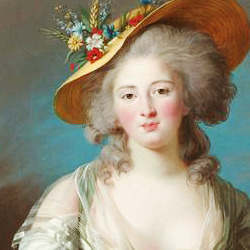
Marie Zéphyrine de France (26 August 1750 - 2 September 1755)
Marie Adélaïde Clotilde Xavière de France (23 September 1759 - 7 March 1802)
Élisabeth Philippine Marie Hélène de France (3 May 1764 - 10 May 1794)
63 notes
·
View notes
Photo

An allegorical painting that portrays the birth of Marie Zéphyrine of France, done by Charles-Joseph Natoire. She was the eldest liveborn child of Louis Ferdinand of France and Maria Josepha of Saxony, and therefore an elder sister of Louis XVI. Her birth had been a disappointment to Louis XV, who was hoping for a grandson, and was greeted with caution because her mother had suffered stillbirths in the two previous years and her health was fragile.
The baby was given her unique name after Saint Zephyrinus, because she had been born on his feast day. Sadly, the little Princess died less than a month after her fifth birthday, after suffering an attack of convulsions.
#Marie Zéphyrine of France#18th century#18th century art#maria josepha of saxony#louis de bourbon#house of bourbon#french monarchy#long live the queue
76 notes
·
View notes
Photo
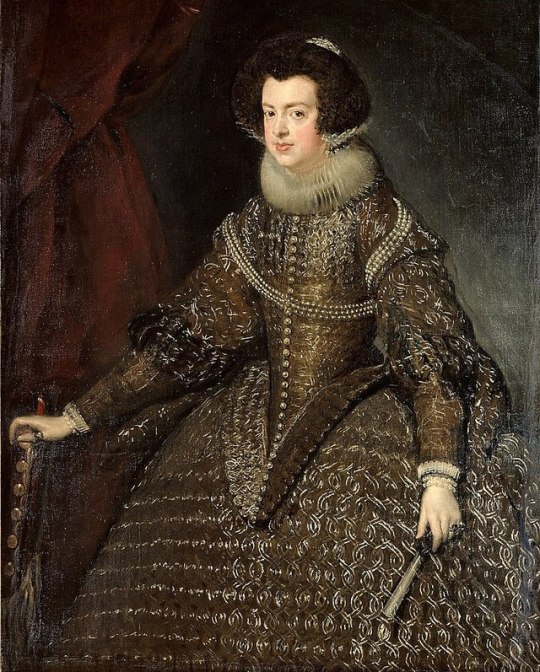
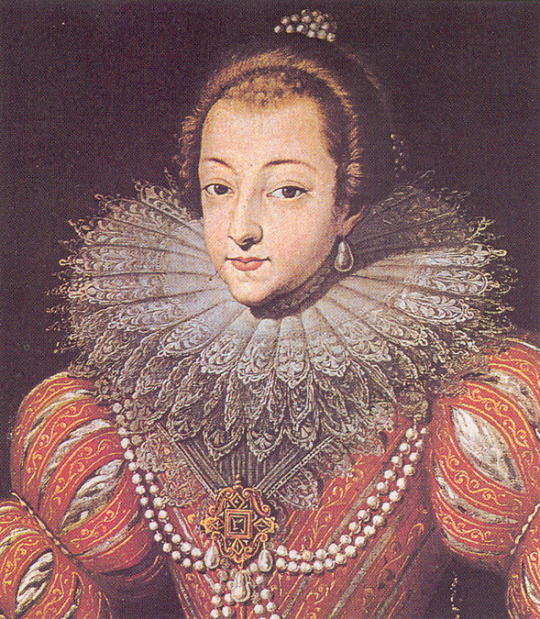

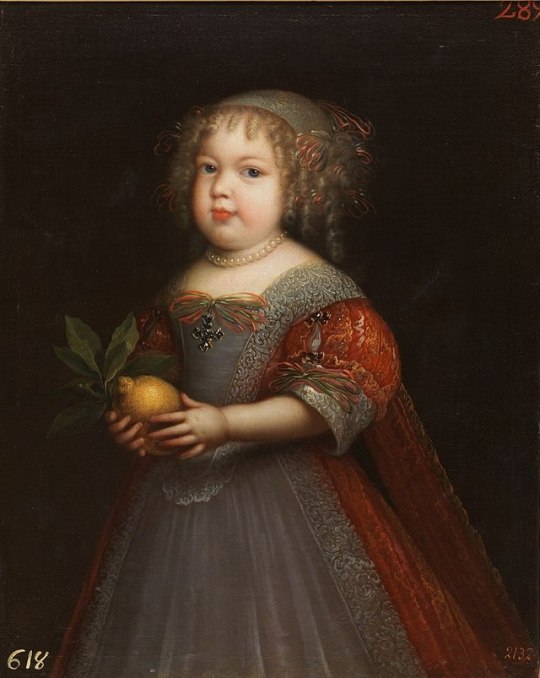

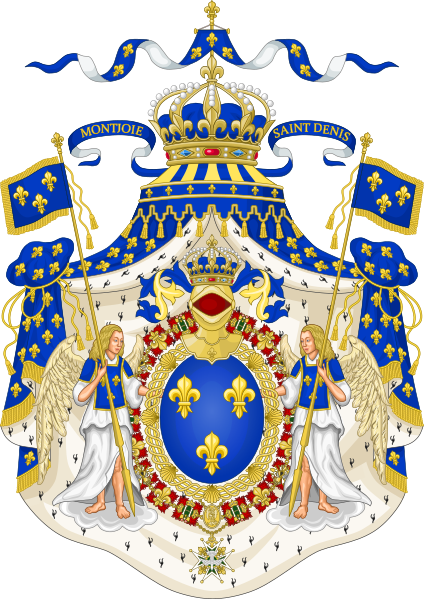

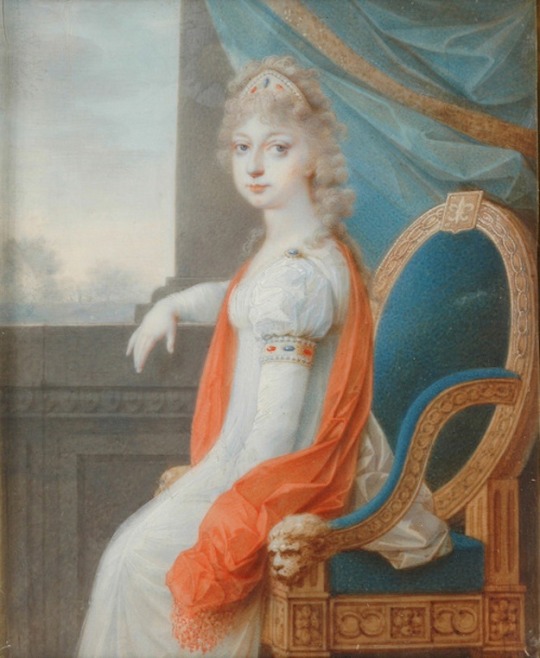
Madame Royale was an honourific generally used for the eldest living unmarried daughter of the King of France, and seems to have originated with the monarchs of the House of Bourbon. It was held until the death of the King, or until the Princess married, when it would often pass on to her younger sister (If she had one).
Some of the official holders of the title were as follows:
Elisabeth of France, eldest daughter of Henry IV and Marie de Medici.
Christine Marie of France, second daughter of Henry IV and Marie de Medici.
Henrietta Maria of France, third daughter of Henry IV and Marie de Medici.
Marie Thérèse of France, third daughter of Louis XIV and Maria Theresa of Spain.
Louise Elisabeth of France, eldest daughter of Louis XV and Maria Leszczyńska.
Marie Thérèse of France, eldest daughter of Louis Ferdinand de France and Maria Teresa Rafaela of Spain.
Marie Zéphyrine of France, eldest daughter of Louis Ferdinand de France and Maria Josepha of Saxony.
Marie Therese Charlotte of France, eldest daughter of Louis XVI and Marie Antoinette.
See the following for more information/other holders of the title
#madame royale#marie therese charlotte#elisabeth of france#christine marie of france#henrietta maria of france#Marie Thérèse of France#louise elisabeth of france#house of bourbon#long live the queue#Marie Zéphyrine of France
120 notes
·
View notes
Photo


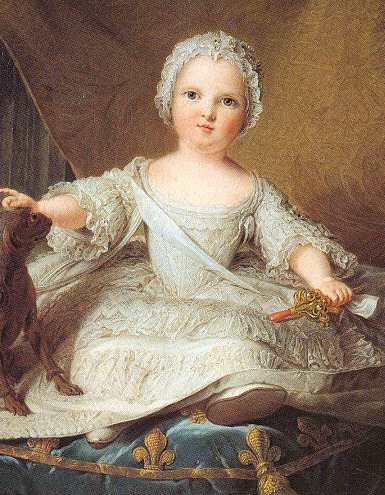

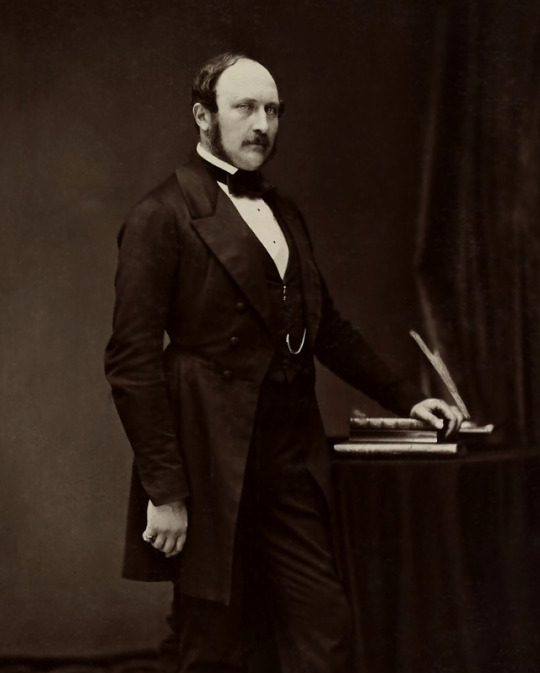


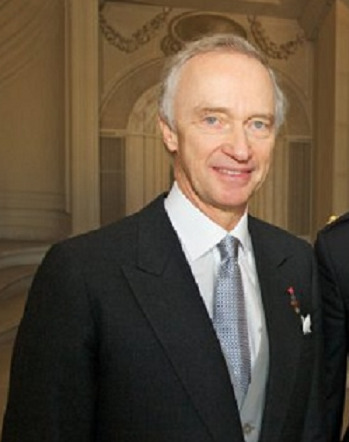


Royal Birthdays for today, August 26th:
Ferdinand II, King of Naples, 1469
Frederick V, Elector Palatine, 1596
Marie Zéphyrine, Princess of France, 1750
Carlo Gennaro, Prince of Naples and Sicily, 1788
Albert, Prince Consort of the United Kingdom, 1819
Alexandra, Princess of Bavaria, 1826
Prince Richard, Duke of Gloucester, 1944
Carl Christian, Archduke of Austria, 1954
Lalla Meryem, Princess of Morocco, 1962
Maria Laura of Belgium, Archduchess of Austria-Este, 1988
#prince albert#prince richard#archduke carl christian#Lalla Meryem#maria laura of belgium#alexandra of bavaria#prince carlo gennaro#ferderick v#ferdinand ii#royal birthdays#long live the queue#Marie Zéphyrine de france
36 notes
·
View notes
Photo
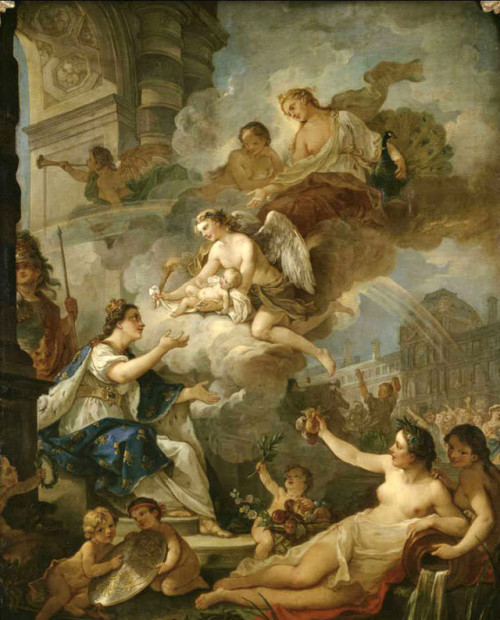
An allegorical painting that portrays the birth of Marie Zéphyrine of France , done by Charles-Joseph Natoire. She was the eldest liveborn child of Louis Ferdinand of France and Maria Josepha of Saxony, and therefore an elder sister of Louis XVI. Her birth had been a disappointment to Louis XV, who was hoping for a grandson, and was greeted with caution because her mother had suffered stillbirths in the two previous years and her health was fragile.
The baby was given her unique name after St Zephyrinus, because she had been born on his feast day. Sadly, the little Princess died less than a month after her fifth birthday, after suffering an attack of convulsions.
#marie zéphyrine de france#Marie Zéphyrine of France#marie zephyrine of France#18th century#french monarchy#louis ferdinand de france#louis de france#maria josepha of saxony#long live the queue
95 notes
·
View notes
Photo
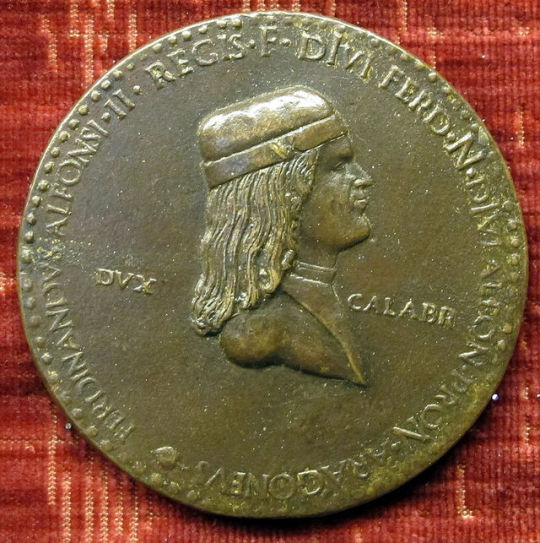
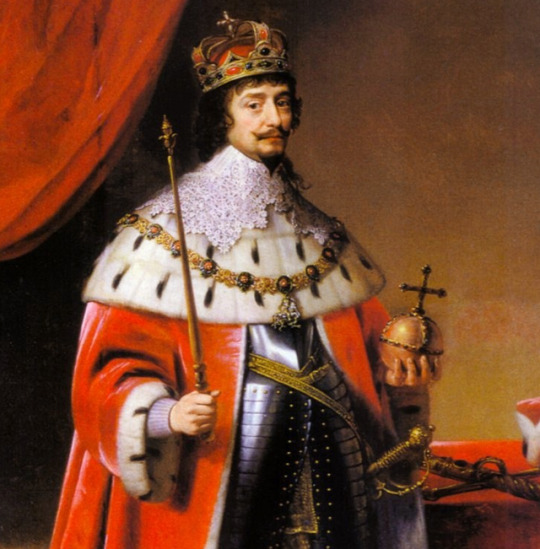

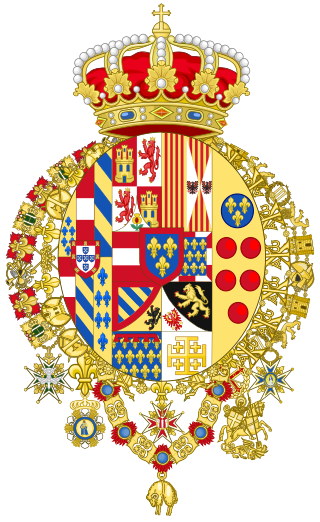

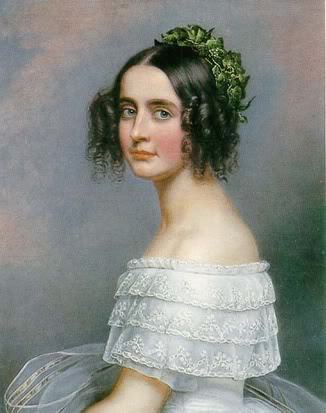


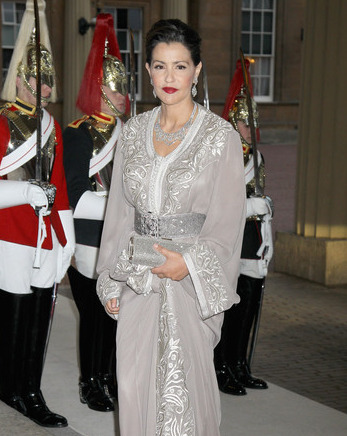

Royal Birthdays for today, August 26th:
Ferdinand II, King of Naples, 1469
Frederick V, Elector Palatine, 1596
Marie Zéphyrine, Princess of France, 1750
Carlo Gennaro, Prince of Naples and Sicily, 1788
Albert, Prince Consort of the United Kingdom, 1819
Alexandra, Princess of Bavaria, 1826
Prince Richard, Duke of Gloucester, 1944
Carl Christian, Archduke of Austria, 1954
Lalla Meryem, Princess of Morocco, 1962
Maria Laura of Belgium, Archduchess of Austria-Este, 1988
#prince albert#prince richard#lalla meryem#maria laura of belgium#archduke carl christian#alexandra of bavaria#Marie Zéphyrine de france.#prince Carlo Gennaro#Frederick V#ferdinand ii#long live the queue#royal birthdays
58 notes
·
View notes
Photo

A portrait of Marie Zéphyrine of France, done by Jean-Marc Nattier . She was the eldest daughter of Louis Ferdinand of France and Maria Josepha of Saxony, and was born on August 26th, 1750. Her mother had given birth to a stillborn son the previous year, and another stillborn son the year before that, and it was said her grandfather, Louis XV, was disappointed she wasn’t a male heir. She died less than a month after her fifth birthday, on September 1st, 1755, after suffering an attack of convulsions.
In between the time of her birth and death, her mother gave birth to four other children: Louis Joseph Xavier, Duke of Burgundy (Sept. 13th, 1751, died of extra-pulmonary tuberculosis on March 22nd, 1761), a stillborn daughter (March 9th, 1752), Xavier Marie Joseph, Duke of Aquitaine (September 8th, 1753, died at five months old after suffering from an attack of convulsions), and Louis Auguste, Duc de Berry (August 23rd, 1754, the future Louis XVI).
Heavily pregnant at the time of Marie Zéphyrine’s death, Maria Josepha gave birth to another son, Louis Stanislas Xavier, Comte de Provence (The future Louis XVIII) on November 17th, 1755.
Five more children would follow, the first being a stillborn son in 1756. Next was another son, Charles Philippe, Comte d’Artois (The future Charles X) on October 9th, 1757. Two years later a daughter was born, Marie Adélaïde Clotilde Xavière (Future Queen of Sardinia) on September 23rd, 1759. A stillborn son followed in 1762, and their last child was a daughter, Élisabeth Philippe Marie Hélène, on May 3rd of 1764.
Louis Ferdinand died of tuberculosis the following year, on September 20th, 1765. Maria Josepha died of the same disease two years later, on March 16th, 1767, leaving behind their five surviving children, ranging in age from the twelve year old Louis Auguste to the just two year old Elisabeth.
#marie zephyrine of France#maria josepha of saxony#louis xvi#louis xviii#louis ferdinand de france#charles x#marie clotilde de france#madame elisabeth#louis joseph xavier de france#Xavier Marie Joseph de france#house of bourbon#french monarchy#long live the queue
73 notes
·
View notes